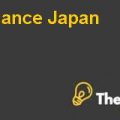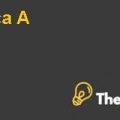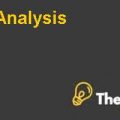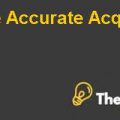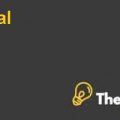
ABN AMRO Takeover
1.) Analyse ABN Amro’s strategic situation in 2006. What were ABN’s strengths and weaknesses at that time? What were its key strategic challenges? Why was it looking for a strategic partner?
ABN Amro’s Strategic Situation
The strategic situation of ABN Amro before 2006 was to grow and provide maximum returns to its shareholders. The strategy was to expand internationally and divest the business to reduce the risk and maximize the opportunities. Although these activities were not consistent with the group’s strategy, but they worked well for the success of the organization.
The objective set by the organization was to become one of the top five of 20 European and US financial institutions in its peer. This was challenging for the organization and with other problems in the way, the organization could not achieve this goal. However, this should not have been taken as a negative side for the company. The goals should be challenging yet achievable. This criterion helps the companies to grow and achieve success. However, ABM AMRO could not achieve this goal and tried to change its strategy in 2006. The strategic situation that started in 2006, as a consequence of not achieving the goal, actually made the company fall down.
ABN’s Strengths and Weaknesses
ABN AMRO was the merger of largest commercial banks in the Netherlands. It had a good asset base and a handful of employees. The other major strength of ABN AMRO was that it was a diversified group so the risk level was low. It was considered one of the three largest banks and had competitive advantages in individual as well as mid size enterprise sector. It also had a strong global presence and it was considered to possess a strong position in the Brazil and Asia. It was by far the largest global financial institution on the basis of its total assets.
Being at the 11th position in terms of total return to shareholders (TRS) out of the 20 peer banks was strength and a weakness of the company at the same time. The company laddered up from 20th position so it was strength but it wanted to be among the top five, so it was a weakness.
Key Strategic Challenges
The key strategic challenge for the company was that it could not achieve the desired position and status that it aimed for. The restructuring process took more than it was anticipated. The company lacked specific knowledge and experience to anticipate the results of the moves that they were to take. If they had a little more patience and confidence in their strategy in 2006, they would not have made specific changes that actually led them down.
Strategic Partner Search
ABM Amro was looking for a strategic partnership so that it could attain the desired level. The company’s management thought that with the current strategy, they would not be able to achieve the fifth position in terms of TRS. Thus, they made specific changes to enhance the strategy. According to the new strategy, re-organization took place that led them down. Because of this underperformance, the shareholders insisted the management to step ahead and pursue merger for the benefit of the shareholders. It forced the company to look for a strategic partner.
2.) Is ABN Amro correct at putting a significant emphasis on total return for shareholders as a key performance measure? Is it better than focusing on return on equity (ROE) or earnings per share (EPS)?
The primary criterion to judge the bank’s performance was its total return to shareholders (TRS – share price appreciation plus dividend yield). Calculating TRS invites many flaws for the company. It is very difficult to manage TRS particularly because the share price appreciation is a very unpredictable factor. There can be certain steps and activities through which the bank can try to manage the cash flows that influence the ultimate TRS.
TRS should not be used as a key performance measure. It is because the company may take severely wrong steps just to improve its TRS in the short run; but this would not benefit in the long run for the company. The TRS can be improved by high dividend pay-out but that will mean a weak future growth strategy. The liability portion of the balance sheet is also very important to consider because the company may be using very high leverage to improve the TRS but that may add up to the risk without benefitting the company in real. This may lead the bank to shift its focus from the optimum capital structure and tilt it more towards the debt.
Return on Equity (ROE) and earnings per share (EPS) are better alternative measures for the company’s performance. The higher return on equity also generates similar situations as of leverage because taking up higher amount of debt will mean using up a lower amount of equity to generate higher returns. However, this particular problem can be solved if the EPS is also measured and the risk is also taken into consideration at the same time. The comparison shall be more transparent and accurate with these measures because they can be directly managed unlike the TRS which is a result of different factors rather than a few.
Using multiple measures of performance will provide different insights about the company and its management. The shareholders can easily relate to it as they will notice the..........................
This is just a sample partial case solution. Please place the order on the website to order your own originally done case solution.

